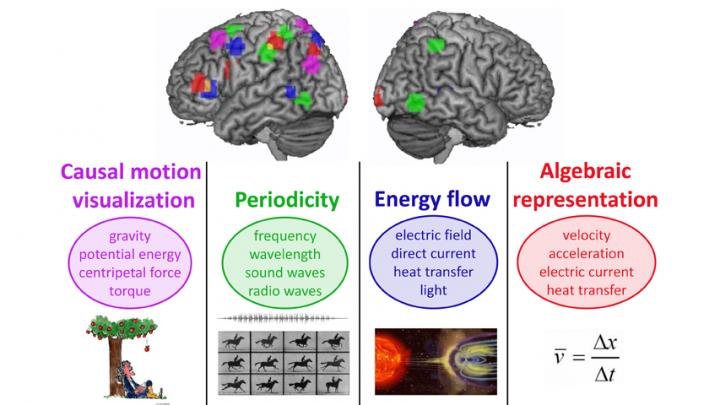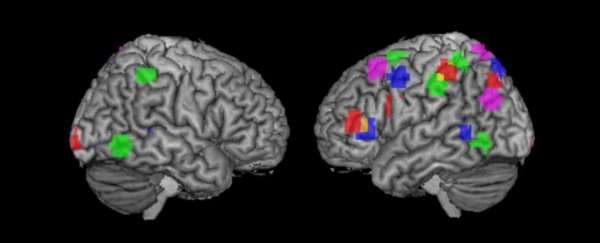If you're reading this, it's safe to say that you're somewhat into science. You might not have studied it, but you probably got excited when researchers discovered the Higgs boson, and, if you're anything like us, jumped up and down behind your computer when they detected gravitational waves for the first time.
But how exactly do our ancient, human brains handle learning about this type of mind-blowing physics? For the first time, researchers have mapped the brains of science students as they think about abstract physics concepts, such as gravity, momentum, and energy. And the results suggest that each concept is associated with its own specific brain network.
Understanding how our brains learn science is obviously fascinating in its own right, but the ultimate goal is for researchers to use this information to help teachers improve science education.
"If science teachers know how the brain is going to encode a new science concept, then they can define and elaborate that concept in ways that match the encoding," said one of the researchers, Robert Mason from Carnegie Mellon University in Pittsburgh. "They can teach to the brain by using the brain's language."
What Mason means by "the brain's language" is that our brain hasn't significantly changed since our ancestors were hunting and gathering thousands of years ago.
So while we're now learning about more complicated things, such as physics, we still only have the same neural systems to work with. In other words, we have the same neural language we had back then, but we've just found more sophisticated ways to use it.
What's most fascinating about this work is that it shows that there are four overarching physics ideas that each repurpose a specific ancient brain system. This suggests that the way our brains learn physics isn't unique to each person, but is in fact unique to what we're learning.
Just like a drug, certain ideas in physics activate the same parts of our brains, regardless of who we are.
To figure this out, the team recruited 9 advanced physics and engineering students, and hooked them up to a functional MRI scanner. Each student was then shown a set of 30 familiar physics concepts, such as gravity, entropy, inertia, refraction, and velocity.
The team then asked a computer algorithm whether it could identify which concept each of the students was thinking about by only looking at their brain scans.
And the answer, impressively, was yes.
But not only that, the algorithm also figured out that there were only four ancient brain systems being used, and each of these was linked to one of four overarching idea in physics that all 30 concepts could be sorted into.
Those categories are:
- Causal motion visualisation, which includes concepts such as gravity, potential energy, centripetal force, and torque.
- Periodicity, which includes frequency, wavelength, sound waves, and radio waves.
- Energy flow, which includes concepts such as electric fields, direct current, heat transfer, and light.
- And algebraic representation, which includes all the formulae, such as velocity and acceleration.
You can see how those ideas activated the students' brains in the scan below:
 Carnegie Mellon University
Carnegie Mellon University
So what were those ancient brain systems doing before they started learning physics? The researchers suggest that the 'casual motion visualisation' pathway was originally used by ancient humans to track the movement of objects in their world.
The 'periodicity' network would have helped hunter/gatherers keep track of changing seasons, and rhythms such as a horse galloping. While 'energy flow' would have helped them understand how the Sun and fire transferred heat to other objects.
'Algebraic representation' seems like the most impractical of the ancient brain networks, but the researchers suggest this would have been used thousands of years ago to help our ancestors calculate and consider quantities and unknown values.
The fact that we've now been able to repurpose these systems is a testament to the power of the human brain, the team concludes.
"This is why humans have been able to move ahead and innovate - because we can use our brain for new purposes," said one of the researchers, Marcel Just. "Human brains haven't changed much over a few thousand years, but new fields like aeronautics, genetics, medicine and computer science have been developed and continuously change. Our findings explain how the brain is able to learn and discover new types of concepts."
The research has been published in Psychological Science.
